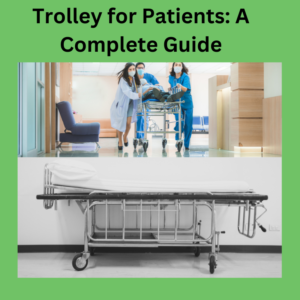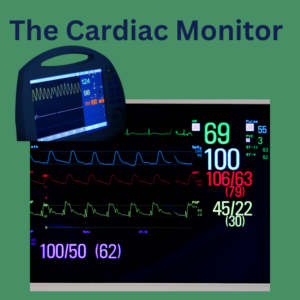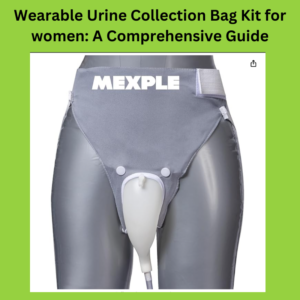Blood Pressure Devices: Types, Applications, and Purchase Guide
Overview of the Article:
An Overview of Blood Pressure Monitoring Devices
A BP apparatus: what is it?
The significance of routinely taking blood pressure readings
Blood Pressure Device Types
Manual blood pressure device
Sphygmomanometer made of mercury
Sphygmomanometer aneroid
Digital blood pressure monitor
Blood pressure monitor on the upper arm and wrist
Finger blood pressure monitor
Key Distinctions Between Manual and Digital Blood Pressure Apparatus
Reliability and accuracy
Usability
Expense and upkeep
The Operation of a Blood Pressure Device
The measurement mechanism
A Comprehensive Guide to Blood Pressure Measurement: An Understanding of Systolic and Diastolic Pressure
Getting ready for the measurement
Placement of the cuff correctly
Reading and analyzing the findings
The Best Home Blood Pressure Device
Suggested models and brands
Things to look for and things to think about when purchasing a blood pressure apparatus
Precision and accreditation
Fit and dimensions of the cuff
Connectivity and memory storage
Typical Errors in BP Apparatus Use
Incorrect cuff placement
Taking measurements at the wrong moment
Poor posture
How to Adjust and Maintain a Blood Pressure Device
Tips for cleaning and storing
When to replace or recalibrate
Who Is Fit to Keep a Blood Pressure Monitor at Home?
Patients with high blood pressure
Senior citizens
Individuals with cardiac disorders
Comprehending Blood Pressure Measurements
Ranges of normal, high, and raised blood pressure
Which measurements point to a health risk?
Lifestyle Advice for Blood Pressure Health
Nutrition and diet
Physical activity and stress reduction
Many Myths Regarding Blood Pressure Monitoring
False beliefs against reality
Are wrist monitors reliable?
Home vs. Professional Blood Pressure Monitoring
When to consult a physician
Home monitoring’s drawbacks: a summary and frequently asked questions
An overview of the main ideas
Commonly asked queries
Overview of Blood Pressure Devices
A medical equipment used to measure blood pressure, a vital sign of heart health, is called a blood pressure (BP) apparatus. Frequent blood pressure checks aid in the diagnosis and treatment of disorders such as hypertension (high blood pressure) and hypotension (low blood pressure), which can result in serious health issues like heart disease or stroke if untreated.
Technological developments have made blood pressure monitors easier to use, allowing people to check their blood pressure at home without going to the doctor. Knowing how these devices operate and how to use them properly is crucial, regardless of whether you use a digital blood pressure monitor or a manual sphygmomanometer.
Blood Pressure Device Types
The two main types of blood pressure monitors are digital and manual. Let’s examine them in greater detail:
1. Manual Blood Pressure Device
A stethoscope and some medical knowledge are necessary for these conventional blood pressure measuring devices.
a) Sphygmomanometer for Mercury
regarded as the most precise and dependable BP device.
measures blood pressure using mercury.
frequently utilized in clinics and hospitals.
needs instruction to function properly.
c) Sphygmomanometer Aneroid
uses a mechanical gauge with a needle to function without mercury.
lighter than mercury blood pressure monitors.
need frequent calibration in order to maintain accuracy.
2. Digital Blood Pressure Device
Because they don’t require expert training, digital blood pressure monitors are more practical for usage at home.
a) Blood Pressure Suitor
most popular digital blood pressure monitor.
When utilized properly, it gives precise readings.
often has memory storage for monitoring blood pressure over time.
c) A wrist blood pressure monitor
Small and lightweight.
less accurate than upper-arm monitors, but easier to use.
b) Blood Pressure Finger App
least precise and smallest type.
Not advised for routine observation.
The Operation of a Blood Pressure Device
The force of blood against artery walls while the heart pumps is measured by a blood pressure monitor. There are two numerals in the reading:
The highest number, or systolic pressure, indicates the pressure during a heartbeat.
The lower value, or diastolic pressure, indicates the pressure at which the heart is at rest in between beats.
A normal blood pressure measurement is 120/80 mmHg.
A Comprehensive Guide to Blood Pressure Measurement
1. Getting Ready for the Measurement
With your back supported, take a comfy seat.
Place your arm on a table at heart level.
Thirty minutes prior to the measurement, abstain from alcohol, cigarettes, and caffeine.
2. Positioning the Cuff Correctly
For wrist monitors, wrap the cuff over your wrist or upper arm.
Make sure the cuff fits comfortably without being too tight.
3. Examining and interpreting the findings
For digital monitors, press the start button; for manual monitors, use a stethoscope.
Await the display of the blood pressure measurement on the screen or gauge.
Examine the reading in relation to normal blood pressure.
The Best Home Blood Pressure Device
Some of the best brands to consider when choosing a blood pressure monitor for usage at home are:
Omron: Reliable for precision and robustness.
Beurer: Provides high-tech digital blood pressure monitors.
Dr. Trust: Offers trustworthy and reasonably priced solutions.
Considerations for Purchasing a BP Apparatus
Select models that have been clinically evaluated for accuracy and certification.
Make sure the cuff size fits your arm correctly.
Storage in memory: useful for monitoring measurements over time.
Connectivity: For improved tracking, several monitors connect to smartphone apps.
Typical Errors in BP Apparatus Use
Inaccurate readings are the result of improper cuff positioning.
A falsely high reading may result from taking a measurement immediately after activity.
Accuracy is compromised when speaking or moving while taking measurements.
In conclusion
A blood pressure monitor is a crucial tool for monitoring heart health. Proper use guarantees accurate readings whether you select a digital or manual blood pressure monitor. A healthy lifestyle and routine blood pressure checks help stave off major cardiovascular conditions.






Reviews
There are no reviews yet.